 | TODAY IN SCIENCE HISTORY NEWSLETTER - 22 FEBRUARY |
| Feature for Today |
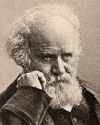 On 22 Feb 1824, Pierre Janssen was born. And standard biographies will tell you of his work with the solar spectrum, yada, yada, etc. ... But they don't tell you this... On 22 Feb 1824, Pierre Janssen was born. And standard biographies will tell you of his work with the solar spectrum, yada, yada, etc. ... But they don't tell you this...So, you've got this astronomer, who's been lame since early childhood, pushing 70 years of age, who decides that to know if the Earth's atmosphere changes what is seen in the solar spectrum, he must go up to where the air in thinnest - up a mountain - on Mont Blanc! With his infirmity, he had to get there in a sedan chair made using a ladder carried by a team of porters. Liked what he saw up there, so he decided he needed an observatory built there. He made the next trip up in a sled pulled by a team of porters. And yes, he did have an observatory built a few feet below the summit of Mont Blanc. In snow so deep there was no bed-rock to rest the structure on. Ready to read more? Try this article from 1894: The Observatory On Top Of Mont Blanc. You'll find out more about Pierre Janssen's adventurous life in the pursuit of scientific knowledge. Astonishing! |
| Book of the Day | |
| |
| Quotations for Today | |
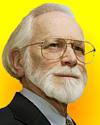 | "Science now finds itself in paradoxical strife with society: admired but mistrusted; offering hope for the future but creating ambiguous choice; richly supported yet unable to fulfill all its promise; boasting remarkable advances but criticized for not serving more directly the goals of society." - J. Michael Bishop, American virologist (born 22 Feb 1936) |
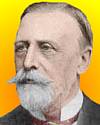 | "Another source of fallacy is the vicious circle of illusions which consists on the one hand of believing what we see, and on the other in seeing what we believe." |
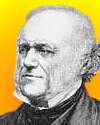 | "It must have appeared almost as improbable to the earlier geologists, that the laws of earthquakes should one day throw light on the origin of mountains, as it must to the first astronomers, that the fall of an apple should assist in explaining the motions of the moon." |
| QUIZ | |
| Before you look at today's web page, see if you can answer some of these questions about the events that happened on this day. Some of the names are very familiar. Others will likely stump you. Tickle your curiosity with these questions, then check your answers on today's web page. | |
| Births | |
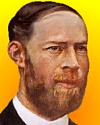 |  A German physicist, born 22 Feb 1857, was the first to broadcast and receive radio waves. His main work was on electromagnetic waves (1887). He generated electric waves by means of the oscillatory discharge of a condenser through a loop provided with a spark gap, and then detecting them with a similar type of circuit. His condenser was a pair of metal rods, placed end to end with a small gap for a spark between them. A German physicist, born 22 Feb 1857, was the first to broadcast and receive radio waves. His main work was on electromagnetic waves (1887). He generated electric waves by means of the oscillatory discharge of a condenser through a loop provided with a spark gap, and then detecting them with a similar type of circuit. His condenser was a pair of metal rods, placed end to end with a small gap for a spark between them.  Can you name this scientist? Can you name this scientist? |
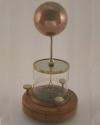 |  Jean-Charles-Athanase Peltier, born 22 Feb 1785, was a French physicist who discovered the Peltier effect (1834), at the junction of two dissimilar metals through which a current flows. Jean-Charles-Athanase Peltier, born 22 Feb 1785, was a French physicist who discovered the Peltier effect (1834), at the junction of two dissimilar metals through which a current flows.  What is the effect at the metals' junction that he observed? What is the effect at the metals' junction that he observed? |
| Deaths | |
 |  Sir Thomas Clifford Allbutt (1836-1925) was an English physician who invented a variation on the thermometer more suitable to his needs. Sir Thomas Clifford Allbutt (1836-1925) was an English physician who invented a variation on the thermometer more suitable to his needs.  What thermometer did he introduce? What thermometer did he introduce? |
| Events | |
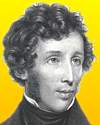 |  On 22 Feb of a certain year, German biochemist Friederich Wöhler informed Jakob Berzelius that he had synthesized the organic chemical, urea. This was a landmark event, for it was the first time a material previously only associated with the body function of a living thing, was made from inorganic chemicals of non-living origin. In this case, urea had formerly been known only from the urine of animals. ( Image: Wöhler ) On 22 Feb of a certain year, German biochemist Friederich Wöhler informed Jakob Berzelius that he had synthesized the organic chemical, urea. This was a landmark event, for it was the first time a material previously only associated with the body function of a living thing, was made from inorganic chemicals of non-living origin. In this case, urea had formerly been known only from the urine of animals. ( Image: Wöhler )  In which decade was this discovery made? In which decade was this discovery made? |
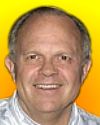 |  On 22 Feb 1995, the first hot air balloon flight over Pacific Ocean (9600 km) was completed. On 22 Feb 1995, the first hot air balloon flight over Pacific Ocean (9600 km) was completed.  Can you name of this balloonist? Can you name of this balloonist? |
| Answers |
When you have your answers ready to all the questions above, you'll find all the information to check them, and more, on the February 22 web page of Today in Science History. Or, try this link first for just the brief answers. Fast answers for the previous newsletter for February 21: vitamin K; penicillin; pancreas; the decade including the year 1953; chlorine, from the Greek word for "green." |
| Feedback |
 If you enjoy this newsletter, the website, or wish to offer encouragement or ideas, please send feedback by using your mail reader Reply button. If you enjoy this newsletter, the website, or wish to offer encouragement or ideas, please send feedback by using your mail reader Reply button. |
--
If you do not want to receive any more newsletters, this link
To update your preferences and to unsubscribe visit this link
If you do not want to receive any more newsletters, this link
To update your preferences and to unsubscribe visit this link
! !



Δεν υπάρχουν σχόλια:
Δημοσίευση σχολίου